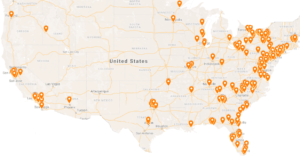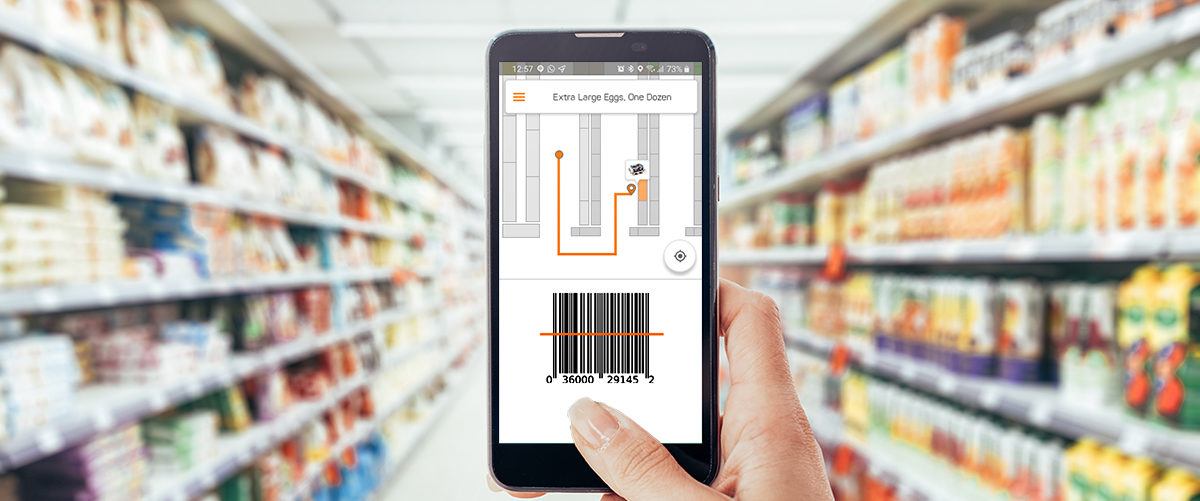How Oriient is helping the biggest players in grocery delivery offer faster AND better service
Grocery delivery was already a growing business–and the pandemic accelerated this trend. Customers hesitant to shop for themselves due to Covid safety concerns, or simply too busy to visit a store turned to grocery delivery, and the service became a lifeline for millions of people. And there is something magical about it: You pick out everything you need from the comfort of your own couch, a grocery picker does the physical shopping for you, and within hours (or sometimes minutes!) the groceries appear on your doorstep.
In light of this, the recent growth we’ve seen for many of these companies makes sense. To take one example, Instacart’s net worth was valued at $39 billion in March 2021, as demand for its services surged with the world in lockdown. And other businesses have taken note, too. Uber, looking to double down on its food delivery offerings, acquired grocery delivery company Cornershop for $1.4 billion earlier this year, and Doordash, first known for its restaurant delivery, started offering grocery delivery in 2020 and went public soon after.
But while grocery delivery is an exciting solution for bridging the online-offline gap, it’s still a relatively new idea that’s not without some kinks. We learned about some of these struggles firsthand from our clients, the biggest players in the field. They were seeing exponential growth in the U.S., but struggling to find a balance between two important delivery qualities: speed and accuracy.
What pain points did Oriient address?
In the grocery delivery space, the need for speed is big–if customers have to wait too long for deliveries, they’ll soon turn elsewhere. But accuracy, or how much of the customer’s order actually gets delivered, is just as important. What gets in the way of achieving both of these things, and why does it matter?
- Item not found (and therefore not delivered). This leads to lost revenue, and also disappointed customers. It might happen for two reasons: either the grocery picker can’t find the item (even though it’s there), or they realize it’s on the other side of the store and don’t want to take too long retrieving it.
This phenomenon is extremely common, and accounts for tremendous losses for delivery companies.- Oriient’s answer? In-store navigation guides grocery pickers to within arm’s reach of the product(s) they’re looking for.
- Store trips take too long. Grocery delivery companies know that any minutes wasted on a shopping trip = money lost. That’s because grocery pickers’ commissions are aligned with how long each trip to the store takes, and their hourly rate is on the rise.
It’s also in the picker’s interest to keep this time short because it means better tips for them. The trouble is, even if the picker is super-familiar with the store, they won’t know the optimal route for picking the groceries and may need to find an unfamiliar product, leading to lost time circling back through the aisles. This is compounded by the fact that basically anyone can sign up to be a picker, making extensive training virtually impossible.
And, while store owners appreciate grocery delivery business, they don’t want grocery pickers clogging up the aisles in their stores.- Luckily, Oriient’s route optimization helps grocery pickers shop efficiently by showing them the best route to take around the store to grab all the products that the customer selected.
- Labor shortage. It’s well known that as we emerge from the early days of the pandemic, many businesses are struggling to find and retain employees. Beyond offering better pay and benefits, these companies need to make the job itself more attractive, and not frustrating. They also need to maintain a consistent level of service no matter how many employees they have.
- Oriient makes it possible for grocery pickers to shop quickly AND thoroughly, with little to no learning curve. This makes the job less frustrating, and more enjoyable. It also makes it more lucrative: fast and accurate delivery leads to better tips, happier employees, and more satisfied customers.
Why Oriient?
There are other indoor location solutions available. The companies we work with know this, but choose Oriient because it’s the most scalable and the easiest to activate and run (no installation in stores, no maintenance). In fact, one of the companies was able to activate Oriient’s solution quickly and effortlessly, going from tens of stores in North America in 2020, to hundreds in 2021, and soon to be thousands of stores in 2022 and beyond. How did Oriient make this possible?

Hundreds of stores in 236 US cities at the end of 2021
- Oriient is easy to deploy. Oriient does not require any hardware, and you don’t need any special knowledge to enable it: it takes one employee a few hours to walk around and map a store, using just their smartphone. It also sits within the retailer or the grocery delivery company’s existing app, meaning little burden on IT’s workload or adding yet another piece of software to employees’ jobs.
- Oriient is scalable. Because other indoor location technologies rely on hardware such as beacons and transceivers, delivery companies (who usually don’t own the stores themselves) must negotiate with retailers in order to install the hardware at each store. This is not practical or scalable, and it becomes expensive very quickly.
- Oriient is zero maintenance. Other solutions rely on keeping a map of all product locations (also known as a planogram) up-to-date, even as stores change constantly. This process is costly and labor intensive. Existing solutions require either massive, on-going field work at all stores, or the use of devices, such as robots or cameras to capture the contents of each shelf (not even an option for delivery companies since they don’t own the stores). Oriient does this differently: Instead of requiring store employees to constantly validate product locations, Oriient does this automatically through Product Location AI (PLAI), leveraging the existing app that the grocery pickers use. When a picker is moving around the store scanning items, Oriient is working in the background to learn (and update!) the precise location of each item. This means there’s no need for extra work to learn and maintain product-locations –with Oriient it’s happening all the time, automatically.
After setting Oriient up in stores, what other benefits have they seen?
- More items found, higher revenue: deliveries are more accurate, leading to more revenue and increased customer satisfaction.
- Less “wasted” miles, more productivity: a 40% increase in productivity means reduced labor costs, bigger tips, and happier employees.
- Bonus: optimization through data analytics: an additional benefit is the location data on operations, store layout, and shopper flow, helping delivery companies (and retailers) work more efficiently.
The takeaway?
The grocery delivery space can be cut throat. Companies are trying to position themselves as either faster or more accurate. Luckily, Oriient helps grocery delivery companies offer the best of both worlds: with our indoor location solution they can offer fast AND accurate delivery, plus it’s easy to activate, scale, and maintain.
Here’s a a real-life example of navigation used by a personal shopper


